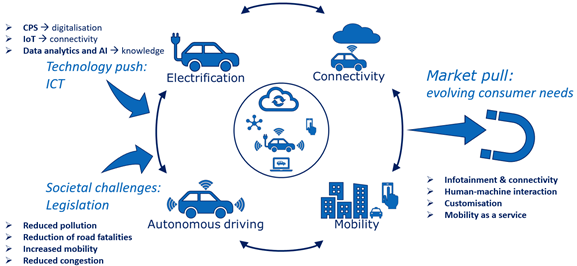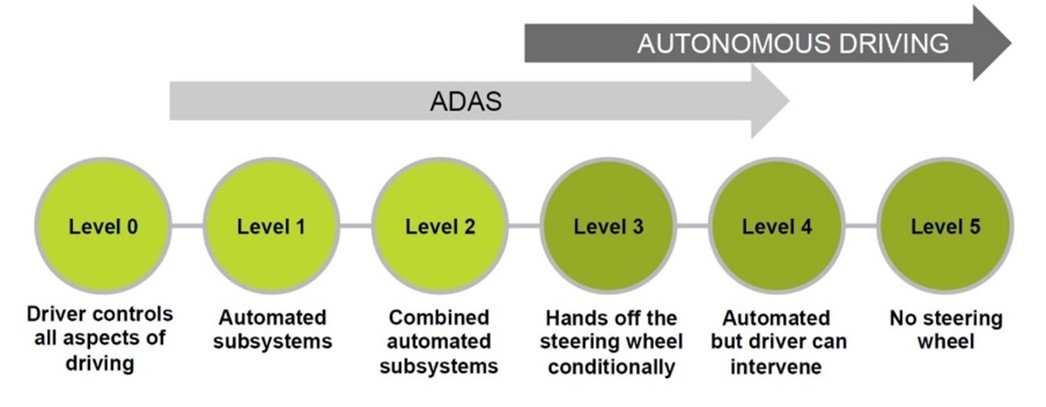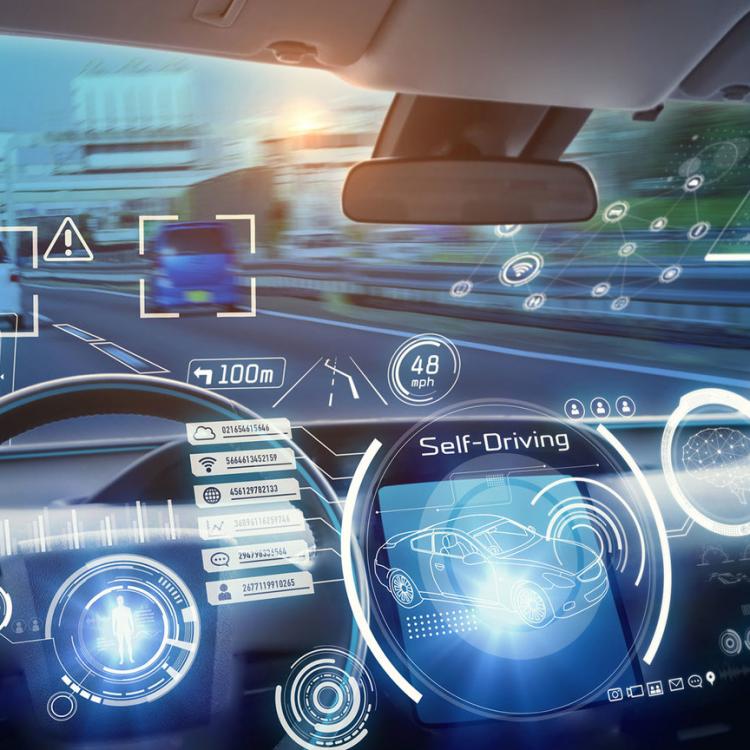The trend of driving automation is contributing to the automotive transformation (Figure 1). The crucial benefits are improved safety and driving comfort. The key contributor to road safety is the promise of reduced number and effect of road accidents. The majority of those are caused by humans. AD offer superior performance over human reaction times, distraction levels, tiredness, or influence of (legal/illegal) performance altering substances.

The stages of the AD are ranked according to the available level of automation in the vehicles (Figure 2). To achieve higher levels of automation[2] a human-centric approach is needed to manage handover and takeover between the vehicle and the humans. Driver interaction is needed to exchange information about the state of the vehicle and monitoring of the driver's state. This interaction is also essential for the user's acceptance of the new technology.

TEACHING demonstrates some of its developments through an automotive use-case: vehicle convoy function Figure 3. Convoy is a complex driving scenario linked to highway platooning. The lead vehicle is followed by other vehicles, all of which rely on the exact functional operation and user acceptance based on human perception of safety. The perception is the decisive factor for the driver’s acceptance and ability to take over control from the autonomous driving system. The system functions seek cooperation between autonomous (safety-critical) CPSoS, IoT, and vehicle’s advanced control strategies.

The challenges that will be solved via the TEACHING platform
The combination of functional interactions in the use-case highlights the challenge of creating a reliable solution for autonomous and safety-critical distributed systems of networking computing elements and humans in the autonomous driving context. The aspects of energy-efficiency, dependability, cyber-security and support for multi-criticality are hence of crucial importance.
As TEACHING explores AI techniques at the edge to realise the human-centred vision leveraging the physiological, emotional and cognitive state of vehicle occupants for the adaptation and optimisation of the AD applications, it is inevitably touching upon the standard challenge posed by the safety-critical systems that intend to integrate AI algorithms. While AI algorithms are extremely promising contributors to the success of AD, they are unlikely to replace the entire human decision-making soon, due to the need to ensure critical safety and due to a lack of standardised certification methods.
The impact of TEACHING in the autonomous driving domain
The automotive domain is one of the key European industrial sectors. Besides the economic benefits, the automotive market is impacting different major societal challenges such as reduction of pollutant emissions, reduction of traffic fatalities, increased mobility for an ageing population, or reducing congestion. Parallel to that, the habits of the consumers are evolving, and new needs are emerging such as infotainment and connectivity, human-machine interaction and customization, as well as mobility as a service. The automotive use case is contributing towards resolving those issues by enhancing the AD functionality. It is also a contributor to the creation of balance between the integration of AI into automotive applications and automotive safety.
[1] Veledar, O.: New Business Models to Realise Benefits of the IoT Technology within the Automotive Industry. MBA thesis, Unpublished (2019). https://doi.org/10.13140/RG.2.2.29671.39847
[2] SAE, “Taxonomy and definitions for terms related to driving automation systems for on-road motor vehicles,” SAE, 2018.






